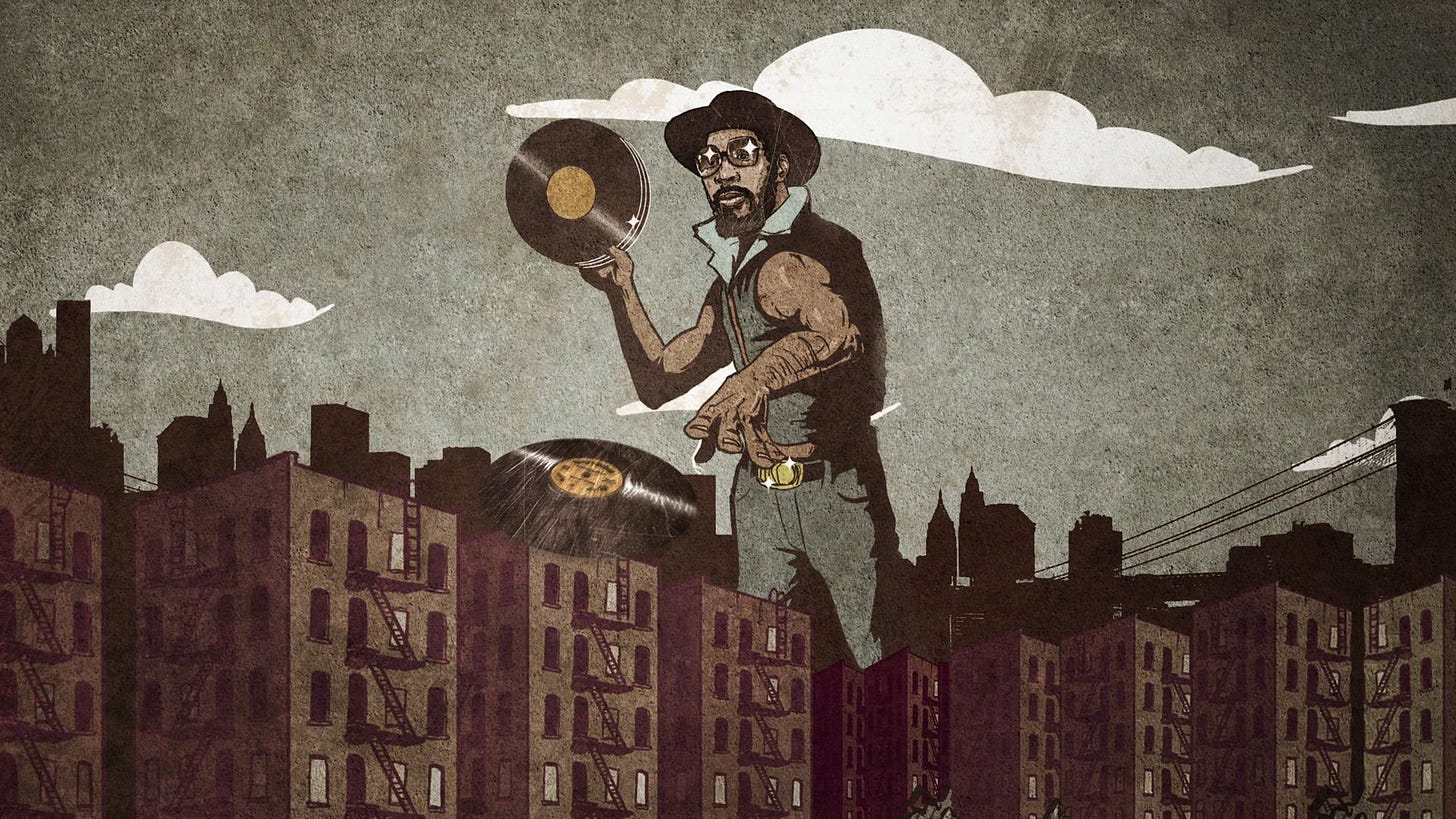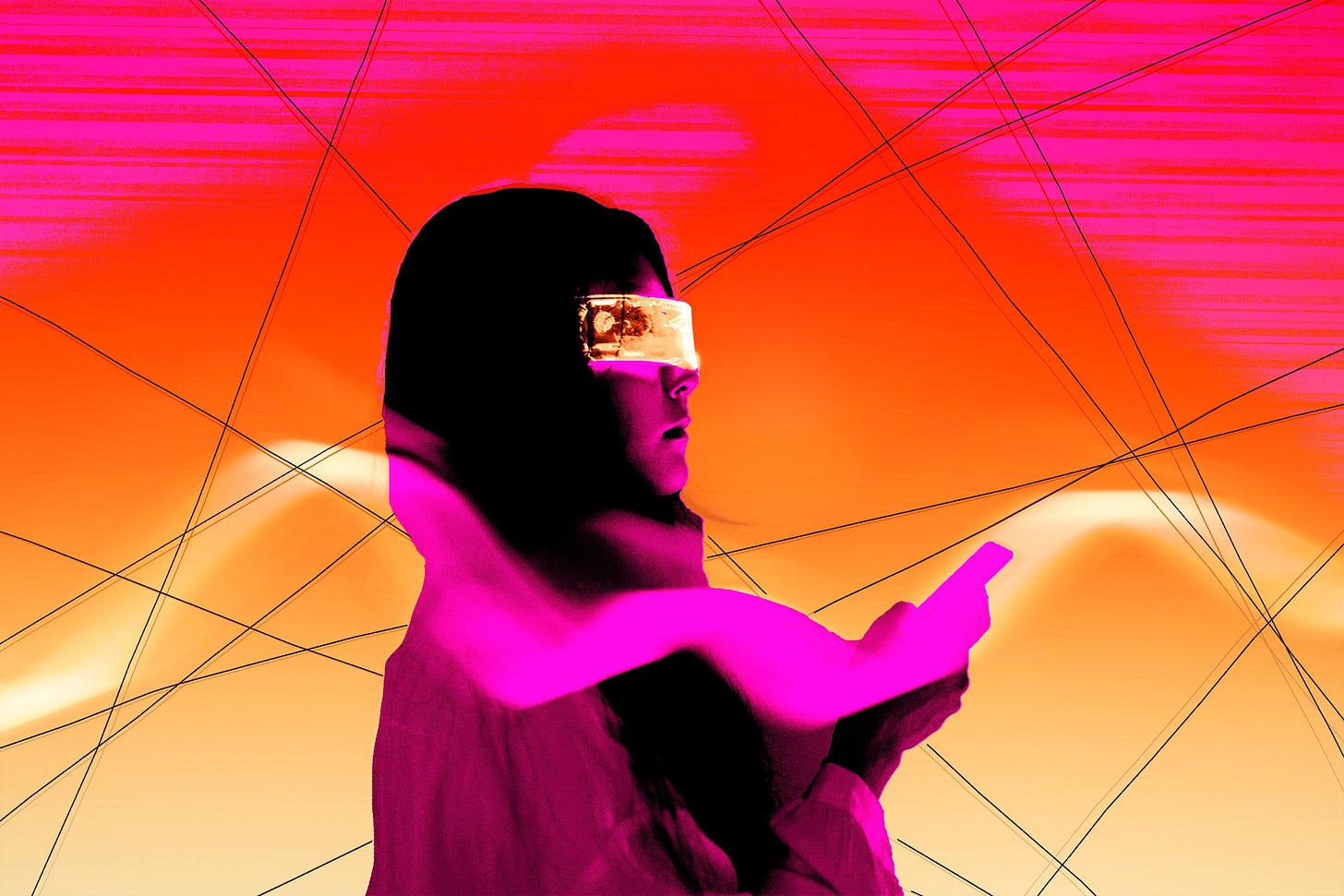
There’s no way it could have been missed. From the New York Times to AARP, the 50th year of hip-hop celebration arrived for its moment. The jams filled Yankee Stadium, a museum, Lincoln Center, and our newsfeeds. Five decades is enough history for grandparents and great-grandparents to remember the time they up jumped da' boogie or got stupid fresh. And if you don’t at least RESPECT hip-hop’s legacy by now, we can end this right here.
Dedicating this newsletter to hip-hop for the next several weeks would be tempting. And it would be entirely justified given what it’s provided to almost every genre and scene URB covers. This Bronx-born DNA influenced everything from rave to electro; chill-out beats to drum n bass.
It’s now a half-century from the famous rec room party on Sedgwick Avenue hosted by DJ Kool Herc’s sister Cindy Campbell. The moment has come to symbolize more than an official birthdate. Multiple generations place hip-hop CULTURE at the heart of their very being. Their lives meshed with it from their earliest memories. The date allows them space to celebrate, show gratitude, or show off cultural trophies.
Whether any genre, much less a multidiscipline movement, needs a designated birthday is debatable. But the earliest moments are important to record for their capture of how we evolve as a society. And without which, we might be whistling a different tune, not to mention how we dress, dance, and talk. Even so, two pieces below and at least one Facebook thread continue to debate the “big bang” moment of hip-hop’s birth. Regardless, individually, we all have an origin story for how we found our way here—or how hip-hop found us. I’ve told mine here and many times before.
“As a kid in the early 80s, I picked up a can of spray paint before any mixtapes or vinyl.”
What I sometimes leave out is that graffiti art, one of the essential pillars, first caught my attention. As a kid in the early 80s, I picked up a can of spray paint before any mixtapes or vinyl. By 1985, I’d discovered WBLS, KDAY, and Doug E. Fresh, but Futura 2000, Phase 2, and Dondi were my heroes before any of that. They were as important in transmitting hip-hop culture worldwide as any DJ, MC, or B-Boy being lauded this past week.
But the names I saw towering across whole subway cars and handball courts in books dedicated to what would become known as street art were distant demigods in a fantasyland called New York City. More locally, on the West Coast, I was a student of aerosol artists like Miner, P-Jay, Soon, Rival, and Risky. Those names I knew personally. Their colorful fills, calligraphic tags, and Vaughn Bodé characters became my visual education in lore and old-school values. Henry Chalfant and Martha Cooper’s Subway Art was my textbook, racked from the local bookstore, like any aspiring vandal.
At the very least, a grand, globally-recognized celebration offers a moment to ponder our collective journey and leave our mark in the vast guest book we've all contributed to. The profound influence of a culture once dismissed as a mere fad, overlooked by platforms like MTV and the Grammys, and confined to the 'hood, surely deserves its moment of loud acclaim.
Eighth-grade me is still savoring the sweetness of all the birthday cake and brushing the confetti out of my fro. As this milestone anniversary year unfolds, there's a wealth of intriguing stories and insightful research for veterans like me and those just beginning their journey. Below, I've highlighted a few gems to keep the fire lit. On the 2,609th-ish week since hip-hop first made its mark, we’re just getting started.

Was Hip-Hop Really Invented 50 Years Ago?
Dan Charnas for The Wall Street Journal (Paywall)
The music world has been gearing up for Aug. 11, which will be widely celebrated as the 50th anniversary of the birth of hip-hop. The story goes like this: On that date in 1973, in the rec room of an apartment building on Sedgwick Avenue in the Bronx, a teenager named Cindy Campbell threw a party, charging admission to raise money so that she could buy clothes for the coming school year. This gathering, one of many that her brother Clive would DJ as “Kool Herc,” is counted by many as the birth of the yet-nameless genre, in part because Herc is said to have honed its foundational musical impulse there.
But this story is not the whole truth. Like many historical events, that party in the Bronx has engendered embellishments, emphasizing one figure as it erases those who came before and after. As an avalanche of coverage fixates on the date, a proportional crescendo of chatter has risen in the hip-hop community about the realities and myths of that creation story. They ask: What was actually born on August 11?

How hip-hop has enhanced American education over the past 50 years, from rec rooms to classrooms
Toby Jenkins
Today, as a professor of higher education, I still carry the fondness I had for hip-hop as a child into my professional work. I have spent over two decades developing hip-hop cultural initiatives on college campuses. Hip-hop has made my jobs feel like house parties and turned co-workers and students into homies. But its impact in education is more than personal.
DJ Kool Herc and Hip-Hop’s Creation Myth
Jeff Chang
The night of DJ Kool Herc and Cindy Campbell’s back-to-school party in their West Bronx apartment building rec room.
The date many of us have been marking as the birth of hip-hop.
Maybe it’s a fool’s errand to try to name a single exact moment when it all began. Serious students of the culture can point in many different directions to many different events and movements. Most of them would be right.
We can all agree that hip-hop did not start with a manifesto. There was never an explicit call to change the world — the way many other movements start.
The Women Who Shaped Hip-Hop
Clover Hope
Women have been a driving force in hip-hop from the beginning of the genre, shaping the music’s power, soul, and reach. But the story of rap has mostly been told through the achievements and exploits of male MCs. Journalist Clover Hope’s groundbreaking new book, The Motherlode: 100+ Women Who Made Hip-Hop, aims to remedy that. It’s an illustrated highlight reel of more than 100 of the most influential women in rap history, from pioneers like Roxanne Shanté and MC Lyte to gamechangers like Salt-N-Pepa and Missy Elliot and current megastars Nicki Minaj and Cardi B.
Hip Hop 2073: A Vision of the Future, 50 Years From Now
C. Brandon Ogbunu and Lupe Fiasco for Wired
MERE HOURS AFTER the arrival of “Heart on My Sleeve,” the AI-generated “Drake” song that went viral last spring, the doomsday projections began pouring in. Most centered on the relationship between artificial intelligence and music, including reflections on copyright, creative license, and the definition of original art.
The main reason the song generated so much buzz is that Drake is one of the world’s most popular musicians. But part of what gave us pause is that hip hop—which celebrates its 50th birthday this week—is driven by a spontaneity that feels as authentically human as anything humans have ever come up with. That is, rap is a unique form of human language, and if AI can mimic that, maybe nothing is safe.
If you prefer to start with the long-form approach, these books will put you light years ahead of most in the knowledge game:
And lastly, this vintage debate between Jeru the Damaja and Lauryn Hill gets at the more complex heart of hip-hop’s politics. The themes here continue to inform the Black experience in America. Just frustrating that the men didn’t allow Ms. Hill to speak more because the enlightenment was flowing.







...oscillate the who- bussin'... bloody chore... mentalistic currency spellbound your lyric-floor...!